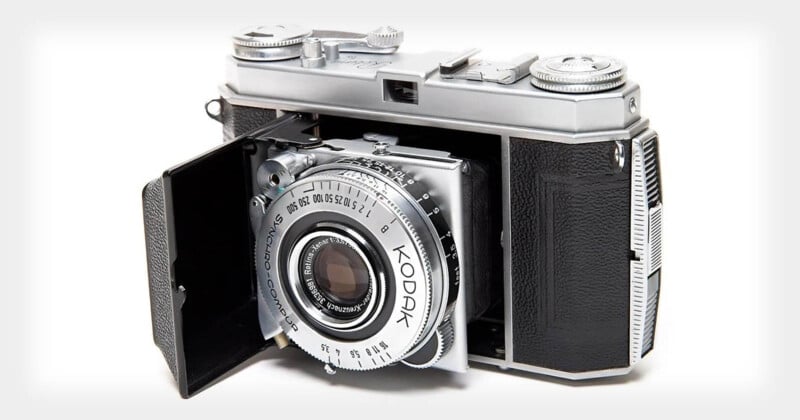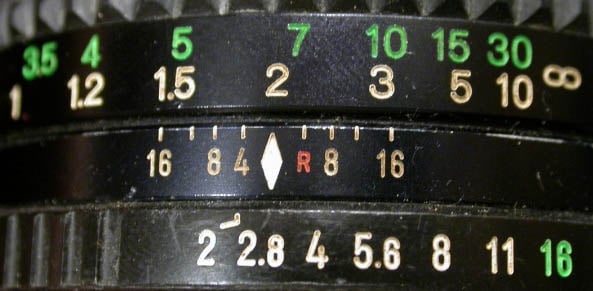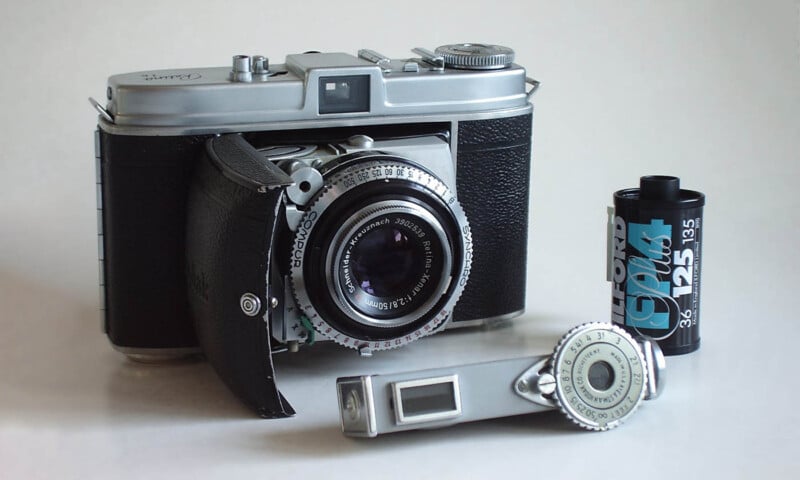
Nowadays, we photographers are a bit spoiled. With how much power current-day cameras and lenses are packing, we can feel free to relegate a lot of the most basic operations, from determining exposure to acquiring focus and more, to automatic functions.
Some of you may, every now and then, fall back on full manual control to get a better feel of the inner workings of your gear. That’s admirable, and learning how to operate a modern camera with all automatic assistance off can definitely be a great learning experience.
However, if you’re really seeking a challenge, you can go so much further than that.
So-called scale focus cameras, which lack any and all focus aids – no reflex mirror, no EVF, no rangefinder, nada – present a huge challenge to many. Yet, they were far and beyond one of the most widespread kinds of cameras throughout most of photographic history, and not without good reason.
If you’re itching to find out more about scale focus cameras, including how they work and if it’s worth adding one to your collection, you’ve come to the right place.
How Does Scale Focus Work?
If you have ever used a lens from the manual focus era (roughly dating to the late 1980s and earlier), then you may already be familiar with the technique of zone focusing. By using the traditional lens scales engraved on SLR lenses intended for manual film cameras, you can visually manage the extent of your depth of field. Make that field large enough to forgive minor errors in focus, set the lens to a distance that looks just about right – and there you have a sharp image!

A scale focus camera uses this principle just like any old manual film camera. However, instead of including a through-the-lens viewfinder or even a rangefinder for more precision, scale focus cameras are much simpler in design. If they have a viewfinder at all, it tends to be a Galilean telescope-type device, or even nothing more than a flip-up “sports finder” with a metal frame.
These kinds of viewfinders are only intended to help you find the composition of your photograph, not to determine focus. They may include frame lines that match your lens’ perspective. But despite sometimes looking fairly similar to rangefinders, you won’t find a rangefinder focusing patch anywhere.
Instead, a scale focus camera depends on you to know and apply the zone focus method to get sharp, well-exposed shots. This goes beyond our modern idea of “manual focus”: not only do you need to dial in the focal distance on your lens barrel by hand, but you also need to determine that distance yourself without any mechanical aids!
Getting Sharp Images Out of a Scale Focus Camera
Perfecting your technique to the point where you can shoot reliably sharp photographs with a scale focus camera is something that many pick up within a few days. Others strive for years to accomplish the same thing.
Calling it “intuitive” doesn’t do it justice, as scale focus is largely a matter of the senses. Without any mechanical means of acquiring focal distance, it’s your judgment and your eyesight that is doing all the heavy lifting. Some people will need to train themselves to be able to recognize whether something is, say, 25 meters away, or rather 18. Others will adjust quite naturally.
To get used to the idea of seeing distance by eye, take a tape measure with you on your next scale focus-powered photo walk. A second camera with reliable autofocus will also work, of course. Measure distances rigorously, not just between you and your subjects, but distances between anything that strikes your eye. The goal here is to memorize the way everyday objects are arranged in space.
That can be the widths of roads and sidewalks, the lengths of residential streets in your neighborhood, the height of buildings or trees, and so on. Soon enough, you will learn to recognize these kinds of distances intuitively. In my mind, this is a skill that any serious photographer should practice, as it helps with composition no matter what gear you’re using.
Also remember that you’re never focusing on a fixed point, especially with a scale focus camera. Read the lens scales, and learn to understand and think through the wealth of information they give you. An experienced photographer can read their depth of field off the scale in an instant and gain just as much from those engraved numbers as from staring into a through-the-lens viewfinder and observing the scene directly! That is how photographing with precision is possible in scale focus, without ever needing a visual preview of your image before you trip the shutter.
Apart from the challenge of learning to “focus by eye”, the bulk of what goes into mastering the scale focus camera, in terms of technique at least, should seem readily familiar to you no matter what other kind of gear you’ve been shooting with up to this point. The laws of the exposure triangle and basic composition still apply, of course – though you will need to make some small adjustments. As almost no scale focus cameras feature through-the-lens viewfinders, for example, you will need to learn how to overcome parallax error if you have never dealt with that before.

Why You Should Pick Up a Scale Focus Camera
Now that we have the basics established, I would like to express some of the great advantages of utilizing a scale focus camera. Despite their inherent limitations, these kinds of simple cameras can produce powerful images – and they’re definitely not to be underestimated!
1. It’s an Amazing Teaching Tool
Feel free to consider this point a bit quaint, but to me, there is a real virtue in picking up a camera that helps you as little as possible to take your image, forcing you to take matters into your own hands and think very carefully about the shot.
Scale focus cameras represent the epitome of this principle. That’s not so much about scale focusing itself. As I mentioned, that’s a technique that can be applied to a wide range of different kinds of camera designs. In theory, you could learn just as much about scale focus and its invaluable lessons for careful focus, depth of field, and exposure with your DSLR and the right lens.
However, in practice, the two are of course worlds apart.
It’s the sum of the scale focus camera’s parts that makes the crucial difference: their (often) old age, and the simplicity and bare-bones philosophy that comes along with that. Such a simple camera is built around the scale focus technique, requiring you to become proficient at it. That alone drives you to learn and engage with it so much more than any modern gear would in its place.
I believe that all of us can learn something valuable from dialing down and forgoing many of the conveniences we are used to in our daily work. You might find that you don’t personally enjoy scale focus – that’s fair, as many feel the same – but I think there’s a high chance it will teach you a ton!
2. You Can Likely Grab One at a Very Low Budget
Only before the rise of the coupled rangefinder camera sometime during the late 1920s was there ever such a thing as a “high-end scale focus camera”.
Thus, the vast majority of surviving examples today will have been base models or low-end cameras in their time, serving as cut-down alternatives to the rangefinder-equipped, pricier alternatives on the market.
This means two things. First of all, nearly all of the desirable rangefinders coveted by today’s collectors (yes, even good old Leica!) were also manufactured in a rangefinder-less, scale focus-only variant, which usually sold in much higher numbers and tended to be mechanically simpler, too.
Second, scale focus cameras are among the few true “dime a dozen” in photography that you can buy nowadays. I’m not kidding here: of the three scale focus cameras I have ever owned, a resounding three of them fell into my hands for less than $25, and that’s in perfect working condition!
3. The Optical Quality for the Money is Unbeatable
As I mentioned, scale focus cameras, by and large, were never marketed towards the top echelon of photographers and maintained low prices throughout their history.
This means that their manufacturers also tended to equip them with their less desirable lenses. For example, the scale focus versions of the Kodak Retina usually got a Rodenstock or Schneider 50mm f/3.5 lens, whereas the pricier rangefinders were more frequently specced with the much more luxurious Carl Zeiss f/2 optics.

Let’s take a step back, though. With those names, you’re not exactly getting B-grade knock-offs, are you? Would most of us really refuse to shoot with a lens by a brand like Schneider just because it’s an f/3.5? What about Angénieux, Steinheil, Olympus, Minolta, or the countless other world-renowned lens makers that lent their glass to hundreds of thousands of scale focus cameras over the years?
The bottom line: for the money that you pay for a scale focus camera (which is likely to be next to nothing if you shop around a bit), you’re getting some seriously fine glass capable of excellent images. The optics-per-dollar ratio here is truly one-of-a-kind.
4. A Scale Focus Camera is a Piece of Photographic History
The scale focus camera is a relic of a bygone era. As soon as rangefinders became cheap to build in huge numbers – that is, around the late sixties – scale focus cameras basically went extinct. Already long before that, they were experiencing a steady decline in popularity.
This means that nearly all currently available examples of scale focus cameras, particularly those made at a higher level of quality that are likely to have survived in good condition, are very, very old cameras. So old, in fact, that most would write them off as antiques (which helps explain those aforementioned low prices).
Think of it as a window in time. Before rangefinders became refined enough to be integrated into the camera body, and long before engineers even thought of reflex mirrors, pentaprisms, let alone live view LCDs, there was the scale focus camera.
Using one of these relics allows you to get in touch with the photographic workflow of the old masters. It gets you back in touch with the very basics of photography, adding a dash of magic to some of the most basic processes and techniques we use every day – many of us, I would argue, without even being fully aware of them.
And if that kind of throwback isn’t a transcendental experience that I would wholeheartedly recommend to any serious photographer, I don’t know what is!
Why a Scale Focus Camera Might Not Be For You
Of course, there are also plenty of valid reasons not to use a scale focus camera. In the interest of fairness, I want to address some of these, too. After all, every photographer is different, and what works for me might not do it for you!
1. To a Beginner, the Limitations Might Be Too Much to Take In
The learning curve that mastering a scale focus camera involves can be pretty severe. Unlike any other type of picture-taker, whether a rangefinder, a view camera, an SLR, or something else entirely, a scale focus camera leaves you with no assists, no helping hand, nothing. If you can’t tell whether that tree is 5 or 8 meters away, you can’t just take a peek into the viewfinder and adjust your guesses.
All this might make scale focus cameras a bit intimidating, frustrating even, to some photographers. Especially newcomers to the world of analog and full-manual photographic processes might be put off by how much guesswork and trial-and-error using a scale focus camera entails.
2. Bokeh Lovers Need Not Apply
As I mentioned already, scale focus cameras tended to sport lower-spec, slower lenses than their rangefinder counterparts. This was as much out of a drive to cut costs as it was for a very practical reason: large apertures, and the thin depth of field that goes along with them, just don’t work well with scale focus.
Without any device to aid focus, estimating distances works fine at the long and medium scales. For instance, if I am composing a landscape scene and want to focus a third of the way in, it probably won’t matter so much if I dial in 12 meters on my lens when the actual distance I was going for was 14.5 in reality.
However, if I am shooting portraits and mistake the subject’s distance to me for 1.5 meters when it is actually 1.1, I might be in some deep trouble!
In other words, focus errors become much more severe at thin depths of field (as anyone who has used a superfast lens on an SLR can easily attest to). Thanks to their moderate maximum apertures, scale focus cameras mostly circumvent that issue.
However, it does mean that the vast majority of them aren’t exactly bokeh machines. And even if they are capable of producing a very thin depth of field, taking such images with these cameras will likely prove frustrating to a large number of photographers.
3. It’s (Probably) Not Going to Be Your Daily Driver
The lack of bokeh is not the only flaw of scale focus cameras. Truth be told, the design is full of shortcomings!
Macro photography is basically impossible, as you can attach all the close-up filters you like, but will never be able to confirm whether subjects are actually in focus at any distance. That is, unless you have exceptionally steady hands, use a measuring tape with the utmost care, or combine your scale focus camera with an external rangefinder. At which point, it needs to be said, you might as well try moving up to an actual rangefinder camera.
Further limitations include fast action, for instance. Because of their old age and simple design, most scale focus cameras cannot handle very fast shutter speeds. My Ferrania Lince 3, for instance, only goes up to 1/250th of a second.
That’s fine for general daytime photography, of course. But if your favorite subjects include sports and wildlife, let’s say, you won’t find much enjoyment in wrestling with the limited speeds these cameras offer.
All this means that for the vast majority of us, scale focus cameras are never going to become daily drivers. They are never going to be our only cameras. Rather, their perfect role is best described as a weekend toy to bring out on a sunny day for a fun, personal photo walk.
For that and that alone, I love my scale focus cameras. They’re challenging, exciting, and fun in the same way that taking a finely-tuned sports car for a spin can be the best thing for a summer afternoon – just maybe not for the morning commute.
